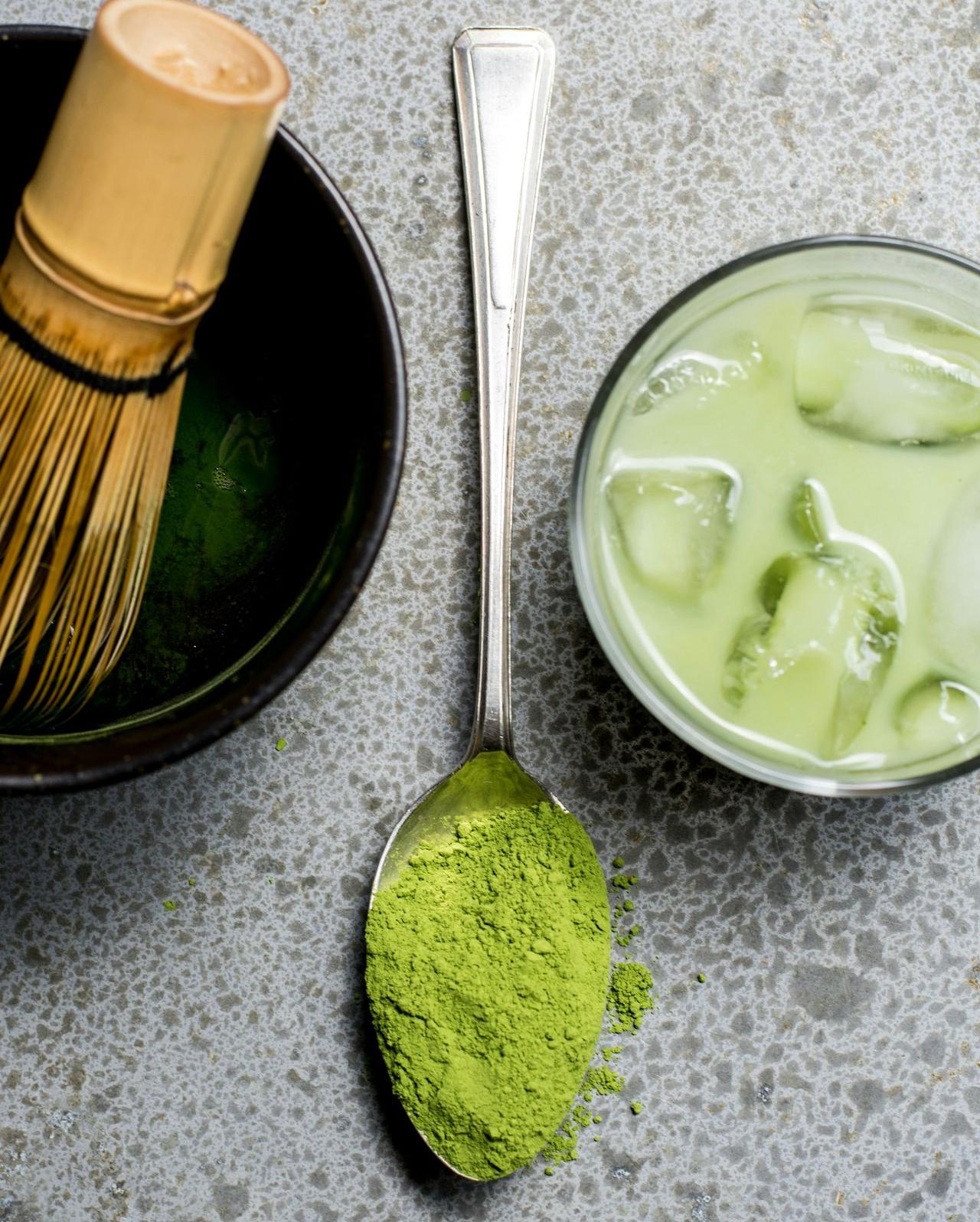Chers Santies,
Un Matcha latte, un Matcha glacé ou un thé Matcha traditionnel à l'eau ? Laquelle de ces trois boissons est votre préférée ? Connaissez-vous la procédure de leur préparation ou encore, saviez-vous que vous pourriez préparer vous-mêmes votre thé Matcha à la saveur fraîche et aromatique ?
Grâce à cet article vous allez pouvoir enrichir vos connaissances sur cette boisson d'origine chinoise et vous serez alors prêts à préparer par vous-mêmes, ce fameux thé matcha d'une saveur fraîche et aromatique.
What is Matcha Tea?
Le thé Matcha, qui signifie "thé moulu" en japonais, consiste en une variété de thé vert réduit en poudre très fine. Ce thé est traditionnel au Japon mais il faut savoir qu'il est d’origine chinoise. Le thé Matcha est consommé depuis des siècles par les moines bouddhistes pour leur méditation et leur bien-être intérieur.
Matcha tea, a true meditation ritual
La préparation du thé Matcha offre chaque jour un rituel détente. Prenez le temps de fouetter votre préparation en dessinant de "M" ou des formes qui vous apaisent. Admirez les contrastes de couleurs sur les parois du bol et cette magnifique couleur de Jade. Savourez la texture onctueuse et la mousse fine. Prenez le temps de respirer et de déguster cette boisson bien-être.
Le thé Matcha en cuisine
Le thé Matcha se présentant en poudre très fine, il a la capacité à s’incorporer dans toutes les préparations : dans vos boissons, glaces, gâteaux, pâtisseries, smoothies ou même des plats salés, selon les envies !
Si vous voulez profiter de tous ses bienfaits, le mieux est de ne pas le cuire, mais simplement l’ajouter à des préparations froides ou le saupoudrer sur un plat, un dessert, etc.
Il existe de nombreuses recettes à base de thé Matcha, mais vous pouvez également inventer vos propres recettes selon vos envies !

How to recognize a quality matcha tea?
Unfortunately, Matcha is not a controlled appellation, even though its traditional manufacture requires complex and precise steps to obtain a truly exceptional matcha tea.
The first quality criterion we look at is color. In fact, it's important to know that if the leaves of Matcha are yellowish to pale green, then this is a poor-quality product. Good-quality Matcha tea is characterized by its powerful jade-green color. The second criterion is taste. If the
tastes bitter or very bitter, then it's a poor-quality tea. A premium matcha, traditionally grown, harvested and made, will offer a very smooth, deep taste, with no bitterness. Finally, the third criterion can be price. Indeed, matcha tea is an expensive tea when it's traditionally made. Like wine or champagne, its price reflects its excellence.
Tea culture
All our teas come from the same Camellia plant, which comes in many varieties. We find Sinensis, mainly for green teas, and Assamica, mainly for black teas. There are also a number of less common varieties.
The culture oftea is characterized by a veritable art, similar to that of champagne or wine. A tea cultivar can be compared to a grape variety. Indeed, a tea cultivar is a selection and cross-breeding of different tea plants according to their taste, aroma or color, with the aim of obtaining the best possible characteristics and yield, as well as a cultivar that is best adapted to soil and climate conditions.
What is an Assemblage or a Blend?
The best matcha teas are often blends. This means that they are made from a blend of different cultivars, in order to obtain the specific characteristics sought from matcha. tea will have a different taste, specific to the cultivars selected for the Assemblage.
Matcha tea: how to use
Traditional Matcha Tea with water
Mélangez 1 à 3 g de matcha à 80 ml d'eau à 80°C et faites mousser avec un fouet à thé, puis dégustez.
Le thé Matcha glacé
For this second preparation option, simply make the classic recipes with cold water or milk and add ice cubes.
Le thé Matcha latte
All you need to do is mix a teaspoon of Matcha Tea with the milk of your choice (animal or vegetable).
Fouettez M" until you obtain the same texture as the traditional water-based version. Use hot or cold milk to suit your tastes.
For those with a sweet tooth, we've got a few more options for you. You can add to your matcha tea mielmaple syrup, coconut blossom sugar, etc., but a good thé matcha de qualité peut se déguster sans sucre !
How to store Matcha tea
Ce qui est important c'est de conserver votre thé matcha avec le couvercle fermé et surtout hors de la portée des rayons du soleil. Le thé doit être stocké dans un endroit sec et frais.
- Vous souhaitez garder votre matcha plus d’un mois ? Placez-le au réfrigérateur ou même au congélateur.
- Si vous en consommez régulièrement, la température ambiante suffit.
À lire aussi : 5 excellentes raisons de boire du thé



